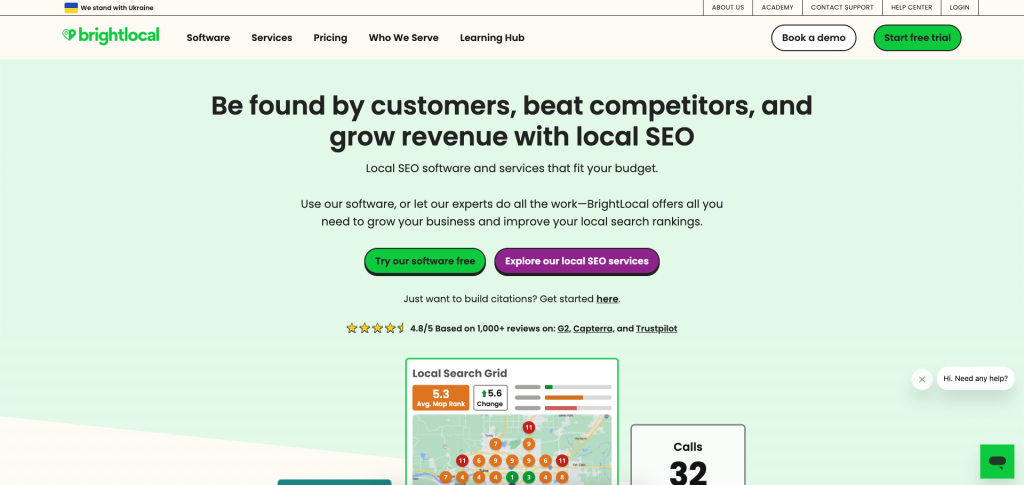“55% of voice searches are for local businesses – and those customers spend 13% more than average. Yet, 90% of businesses aren’t optimized for voice search. Here’s how to fix that and turn ‘Hey Google’ into ‘Hey, new customers!’”
Voice search optimization isn’t the future; it’s already here. With 40% of adults using voice search daily, local businesses that ignore this trend are missing out on ready-to-buy customers asking “Where can I buy organic dog food near me?” or “Affordable yoga studios open now.”
In this guide, you’ll learn how to optimize for voice search using AI tools and simple tweaks that put your business front and center—no tech wizardry required.
Why Voice Search Optimization is a Goldmine for Local Businesses
Key Stats to Know:
- 55% of voice searches lead to a store visit within 24 hours (BrightLocal).
- Voice shoppers spend 13% more than other customers (Google).
- 72% of voice searches use long-tail phrases like “24-hour pharmacy near me” (PwC).
How Voice Search Differs from Text Search
- Text search: “best coffee shop Boston”
- Voice search: “Where’s the closest coffee shop with vegan pastries that’s open now?”
Voice queries are longer, conversational, and packed with intent. If your SEO isn’t answering these questions, you’re invisible to voice assistants like Siri and Alexa.
3 AI Tools to Dominate Voice Search (No Coding Needed)
1. BrightLocal: Track Your “Near Me” Rankings
- What it does: Monitors where you rank for voice search terms like “emergency plumber near me.”
- Pro Tip: Set up alerts for keywords with local modifiers (e.g., your city, neighborhood).
- Example: A Portland bakery discovered they ranked #4 for “gluten-free cupcakes Portland” but #1 for “best birthday cupcakes near me”—and doubled their orders.

2. SEMrush Voice Assistant: Optimize for Conversational Queries
- What it does: Analyzes voice search trends and suggests natural-language keywords.
- Pro Tip: Use its “Questions” report to find phrases like “Where can I…?” or “How do I…?”
- Example: A hardware store targeted “How to fix a leaky faucet without a plumber” and saw a 45% traffic boost.
3. LocalVox: Automate FAQ Schema for Voice SEO
- What it does: Generates FAQ schema markup so Google reads your content as voice search answers.
- Pro Tip: Add FAQs like “What time does [Your Business] close on weekends?” to your website.
- Example: A spa added FAQ schema and started appearing in 60% more voice search results.
Actionable Checklist: Voice Search Optimization in 5 Steps
Step 1. Target Long-Tail, Conversational Keywords
- Tools: AnswerThePublic, SEMrush
- Do this:
- Brainstorm questions customers ask (e.g., “Where can I buy organic dog food [City]?”).
- Optimize blog posts/service pages for these phrases.
Step 2. Add Natural Q&A to Your Google Business Profile
- Do this:
- In your GBP Q&A section, include:
- “What’s your most popular service?”
- “Do you offer same-day appointments?”
- Update weekly (e.g., seasonal offers, holiday hours).
- In your GBP Q&A section, include:
Step 3. Create Voice-Optimized Podcasts or Audio Content
- Tool: Descript
- Do this:
- Record 2-minute tips (e.g., “3 Signs Your Roof Needs Repair [City]”).
- Upload to your website with transcripts for SEO.
Step 4. Optimize for Featured Snippets (Position Zero)
- Do this:
- Structure content with clear headers (e.g., “How to Choose a Reliable Plumber in [City]”).
- Answer questions in 40-60 words at the top of your page.
Step 5. Speed Up Your Website (Voice Search Loves Fast Sites)
- Tool: Google PageSpeed Insights
- Do this:
- Compress images (use TinyPNG).
- Enable lazy loading.
Case Study: How a Local Pet Store Won Voice Search
The Problem:
A Seattle pet store struggled to compete with big chains for “pet supplies near me.”
Their Voice Search Strategy:
- Used LocalVox to add FAQ schema: “Where to buy grain-free dog food in Seattle?”
- Ran SEMrush Voice Assistant to find untapped queries like “pet stores open late Capitol Hill.”
- Created a Descript-powered podcast: “Seattle Pet Lovers Guide” (embedded on their site).
Results in 4 Months:
- 80% increase in “near me” website visits.
- 25% rise in same-day pickup orders.
3 Pitfalls to Avoid
- Ignoring Mobile Optimization: 60% of voice searches happen on mobile. Test your site on phones!
- Keyword Stuffing: Voice search favors natural language. Write like you’re talking to a friend.
- Forgetting Local Landmarks: Mention nearby areas (e.g., “10 mins from [Park]”) in your content.
Key Takeaway
Voice search optimization isn’t about gaming the algorithm – it’s about answering real questions from real customers. Start with one tool (like BrightLocal) and one long-tail keyword. Before you know it, you’ll be the go-to answer for “near me” searches in your area.
P.S. The pet store in our case study used the exact checklist we’re giving you for free. 🐾